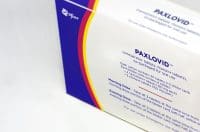Increased risk of hospital-acquired pneumonia
Using the medical records of almost 6,400 adults hospitalized at one medical center for at least 3 days, researchers examined the link between acid-suppressive drugs and hospital-acquired pneumonia.
The analysis revealed that about half of the patients were given acid-suppressive drugs—either proton-pump inhibitors (PPIs) or histamine2-receptor antagonists. The researchers found that hospital-acquired pneumonia was diagnosed significantly more frequently among patients receiving acid-suppressive drugs than among patients not receiving them. After comparing the two types of acid-suppressive drugs, they concluded that only PPIs posed a statistically significant risk.
Read more about Acid-Suppressive Medication Use
New drug for hyponatremia
The Food and Drug Administration (FDA) has approved tolvaptan (Samsca) for hyponatremia associated with heart failure, cirrhosis, and the syndrome of inappropriate antidiuretic hormone secretion.
A vasopressin-receptor antagonist, tolvaptan will come with a boxed warning indicating that therapy may be started only in hospitals, where sodium levels can be closely monitored. That’s because rapidly rising sodium levels can result in osmotic demyelination syndrome, which can lead to coma and death.
The most common adverse reactions during clinical trials included thirst, dry mouth, weakness, constipation, excessive urine, urinary frequency, and increased blood glucose levels.
Read more about tolvaptan (Samsca) for hyponatremia
Aspirin in patients with peripheral arterial disease
A meta-analysis of more than 5,000 patients in 18 controlled studies has found that researchers don’t have enough data to determine if aspirin reduces the risk of heart attack and death in people with peripheral arterial disease (PAD). However, they did find that aspirin significantly reduces the rate of nonfatal stroke in these patients.
To determine the net benefit and bleeding risks of aspirin therapy in patients with PAD, the researchers recommend more randomized controlled trials.
Read more on this topic at The Journal of the American Medical Association
Fewer hot flashes
In a recent study, 61% of women who took pregabalin (Lyrica) experienced fewer hot flashes compared with only one-third of those who took a placebo. Currently, the drug is approved by the FDA to treat diabetic peripheral neuropathy, postherpetic neuralgia, and fibromyalgia and to be used as adjunctive therapy for adults with partial-onset seizures.
Pregabalin isn’t approved to treat hot flashes, an adverse effect of chemotherapy and a symptom of menopause. Approved therapy for hot flashes includes hormone therapy and antidepressant therapy.
Read how Lyrica helps reduce hot flashes at Bloomberg.com and Pfizer for Professionals.
Cardiac benefits of folic acid intake
Folic acid intake by pregnant women may reduce the risk of congenital heart defects in their children. In 1998, the Canadian government made fortifying grains with folic acid mandatory. In a recent study, investigators used Canadian databases to compare the rates of severe congenital heart defects during the 9-year period before the mandatory fortification with folic acid with the rates during the 7-year period after fortification.
The finding: The rate of heart defects, which remained steady during the initial 9-year period, dropped 6% a year during the 7-year fortification period, suggesting that folic acid may help prevent such defects.
Read more about the prevalence of severe congenital heart disease after folic acid fortification of grain products.
Flomax linked to ophthalmologic complications
Researchers analyzing health databases for a link between alpha blockers and adverse effects after cataract surgery have found that tamsulosin (Flomax) poses a risk of ophthalmologic complications. Other alpha blockers don’t appear to pose a similar risk.
Specifically, men age 66 and older who used Flomax within 2 weeks of the surgery were more likely to experience intraoperative floppy iris syndrome and its complications, including retinal detachment, lost lens or fragments, and endophthalmitis. The drug is prescribed for benign prostatic hypertrophy.
Read more atPhysician’s First Watch.


















